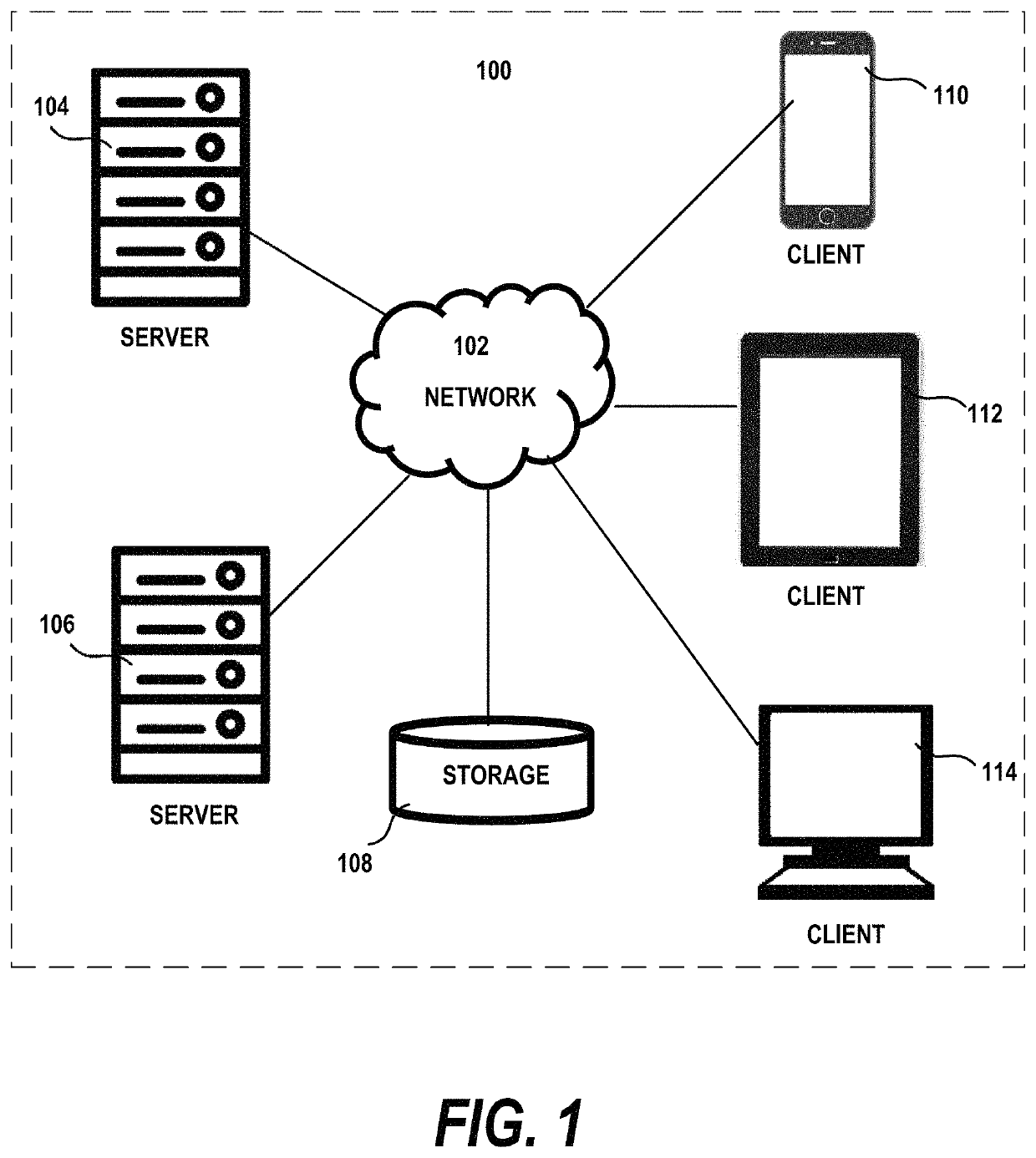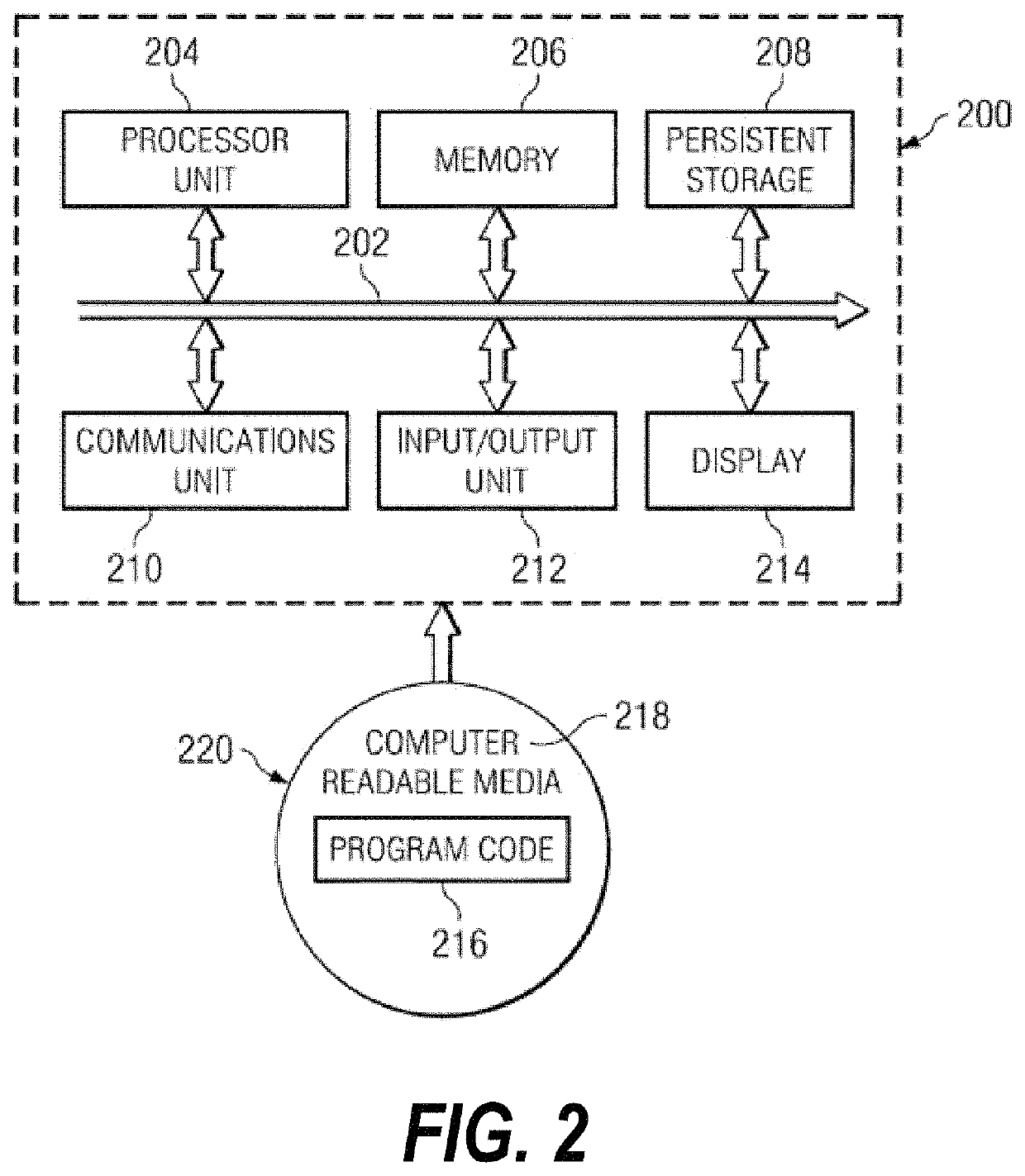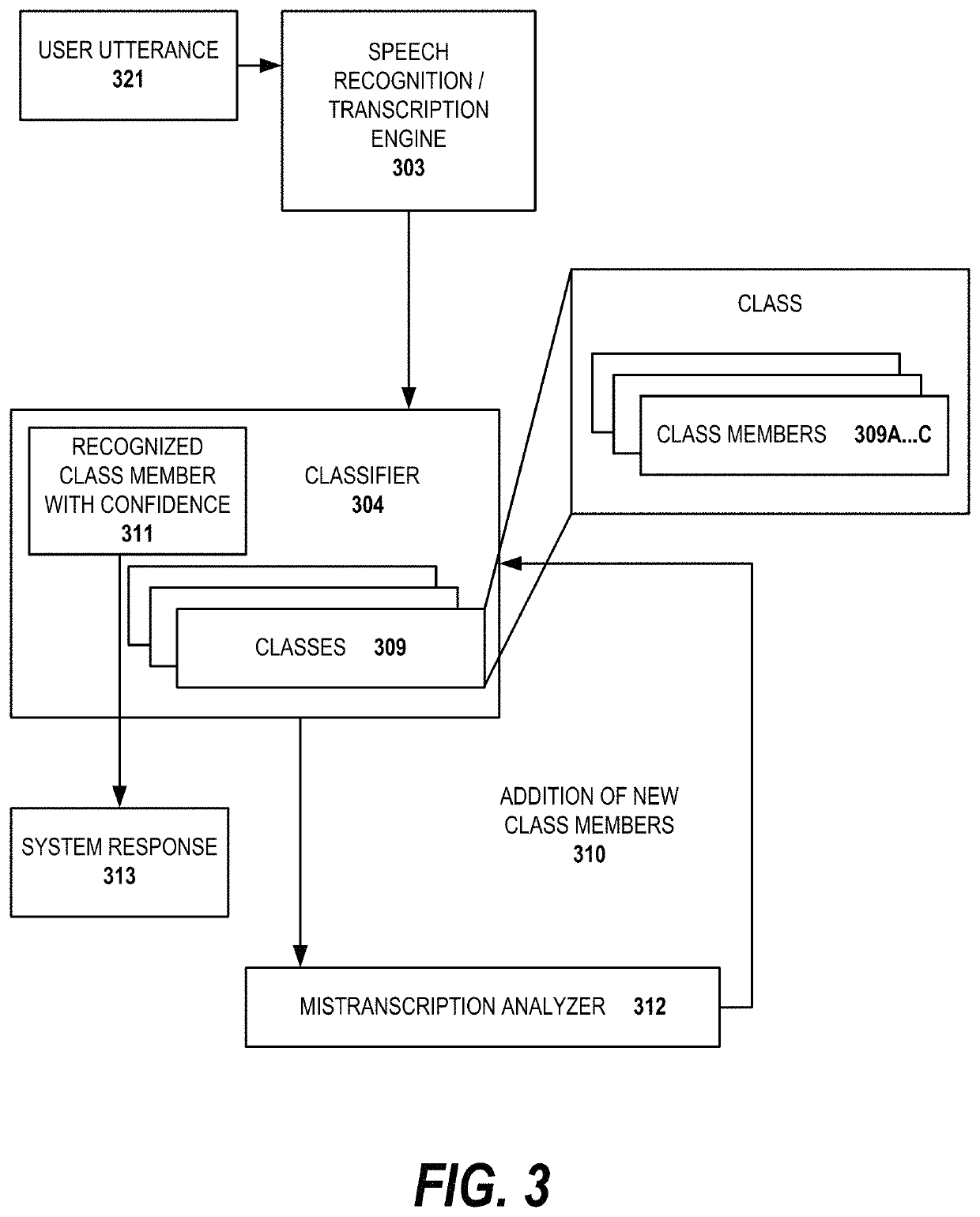Class based learning for transcription errors in speech recognition tasks
a speech recognition and task technology, applied in the field of machine learning, can solve the problems of speech recognition process error, command may not be properly performed, speech may not be properly transcribed,
- Summary
- Abstract
- Description
- Claims
- Application Information
AI Technical Summary
Benefits of technology
Problems solved by technology
Method used
Image
Examples
Embodiment Construction
[0019]At a high level, preferred embodiments of the invention provide a system, method and computer program product for machine learning for the appropriate identification and handling of a mistranscription from a speech recognition system. The invention uses a set of one or more known utterances which when recognized by the speech recognition system produce a system response. In preferred embodiments, the utterances are arranged in a set, or a “class”; when one of the utterances the class is recognized, a class system response action is performed. The recognized utterances are called “class members” when they are members of a class. Each utterance usually consists of a plurality of words, the number of words may vary according to a particular utterance. When a transcription matches some, but not all of the words in a member utterance, e.g., a word Y is recognized in place of the word X in a given slot in the class member, this transcription is taken to be some evidence of a mistran...
PUM
 Login to View More
Login to View More Abstract
Description
Claims
Application Information
 Login to View More
Login to View More - R&D
- Intellectual Property
- Life Sciences
- Materials
- Tech Scout
- Unparalleled Data Quality
- Higher Quality Content
- 60% Fewer Hallucinations
Browse by: Latest US Patents, China's latest patents, Technical Efficacy Thesaurus, Application Domain, Technology Topic, Popular Technical Reports.
© 2025 PatSnap. All rights reserved.Legal|Privacy policy|Modern Slavery Act Transparency Statement|Sitemap|About US| Contact US: help@patsnap.com



